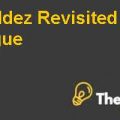
Introduction
About Google Inc.
Google Inc. is an American based multinational company that deals in providing services and products related to internet. The company was founded by Larry Page and Sergey Brin; it became incorporated in the year 1998. The company specializes in developing online advertising technologies, cloud computing, software, and advertisement platform AdWords. Through its search engine, the company has served billions of people around the world (Eisenmann, Barley, & Kind, 2014).
The paper attempts to discuss the operational and service management at Google Inc, discussing the case of Google Glass. The paper highlights issues and problems faced by Google in its service and operational management, whereas, it also addresses the strategies applied by the company in addressing those issues.
Discussion
The Technological Revolution at Google
Considering the rapid pace of the wearable technologies around the world, it is assumed that the handheld devices will soon become outdated. The reason for the increase in demand for wearable devices include an increase in venture capital funding, technological innovation, increased customer awareness for wearable devices, and various technological companies offering wearable devices. Therefore, the improved interest of consumers for wearable devices has also aroused the interest of companies in focusing more on these devices.
Google Glass is a pair of glasses with an android based headset, which performs the functions of a smartphone and tablets. It manages the functions of receiving and dialing calls, voice chats, social media, searching the web, and many other things. The product was developed in a secret Google X laboratory where the company normally develops futuristic technologies that could be beneficial in the future. The other projects for Google X laboratories include developing a contact lens that monitors the glucose level, self-driving cars, and providing internet to the developing areas through balloons. On the top right side of Google Glass, a processor and a camera was attached that reflects the image from the projector to the user’s retina (Eisenmann, Barley, & Kind, 2014). It has been assumed by Google that the product would be a boom amongst its consumers as it would also lead to profitable margins and to enjoy the advantage of a first mover. The assumed sales for the company has been provided in exhibit 1.
Since long, the aim of Google has been rested upon in organizing the information of the world and to make it universally accessible. Many would claim that the particular aim of the company has been successfully achieved as majority of the internet users prefer using Google as their internet search engine. However, the end is not near for Google as it has advanced its technology with the same aim of providing the world of knowledge made easily accessible through the introduction of Google Glass. This has seem realistic to interpret that Google would remain in the face of the world for many years. The Google Glass product is a combination of embedding different Google products in a single product. The aim of Google remains on providing an integration of all Google products using the technology of Google Glass. The features of Google maps, Google translate, Google Now as the voice assistant, and the integration of Google search engine in helping its customers to get more familiar with the Google products.
Key Operational and Service Management Issues and Problems
The Google Glass technology has not been embraced by many people as they claim that it raises issues of privacy and social acceptance concerns. International privacy officials have claimed that a Glass product captures the video and audio of individuals without their consent and knowledge in manner of surveillance. Therefore, the use of data in terms of sharing among the circles and storing of the data is unknown. The international privacy officials wrote a letter to the chief executive officer of Google, Larry Page and expressed their concerns with the Google product. The international body raised a total of 8 concerns which raised questions on the capabilities, operations, and the core competency of the product.
The first question was based on the privacy protection laws and the international body wanted to inquire if Google Glass has followed the privacy protection laws in developing the product. The second concern is raised on the privacy safeguards which has been applied by Google and their application developers and wants to inquire about those privacy safeguards (Braga, 2013). The third issue was raised when the international body asked Larry Page about the particular information, which is collected by Google from Google Glass, and what type of information is shared with application developers and third party users.........................
This is just a sample partial case solution. Please place the order on the website to order your own originally done case solution.













